Greater Trochanteric Pain Syndrome (GTPS) is a condition characterized by pain on the outer side of the hip. It is often caused by inflammation of the tendons or bursae near the greater trochanter, the bony prominence on the outside of the hip. Common symptoms include:
- Pain on the outside of the hip
- Pain that worsens with activity, such as walking, climbing stairs, or lying on the affected side
- Tenderness over the greater trochanter
What are the causes?
GTPS can result from various factors, including:
- Overuse or repetitive movements (common in runners and cyclists)
- Injury or trauma to the hip
- Weakness in the hip muscles
- Tightness in surrounding soft tissues (e.g., hip flexors, quadriceps, IT Band)
How long will symptoms last?
The duration of GTPS can vary. With early treatment symptoms often improve within a few weeks to a couple of months. However, in some cases, especially if left untreated or and if it becomes persistent, GTPS can last for several months or even longer. Most people see significant improvement within 3 to 6 months with consistent treatment, but recovery time may be longer for some, particularly if the condition recurs or if aggravating factors are not addressed.
How can I help symptoms?
- GTPS responds well to conservative management through Physiotherapy in most cases, and surgery is not necessary for this condition.
- Physiotherapy looks to address GTPS by helping you understand how to best manage your pain, by modifying activity that aggravate symptoms.
- You will be provided with a tailored Home Exercise Program (HEP) with targeted exercise with the aim of improving hip stabilization and gluteal strength.
- Rest and Activity Modification: Avoid activities that worsen the pain, like running or prolonged standing, and modify your daily routine to reduce strain on the hip.
- Use of Ice/Heat Therapy, over-the-counter pain relief.
- In some cases, if symptoms are persistent, the patient may be eligible for a Steroid injection, which can provide a short-term pain relief to allow for rehab to be completed.
- Gradual Return to Activity: Once symptoms improve, slowly reintroduce low-impact activities to prevent further irritation.
When should I get help?
You can try to manage it yourself with rest and pain relief before you see a healthcare professional.
You should speak to a healthcare professional if:
- Symptoms persist for several weeks, with no improvement despite self-care, pain relief and the advice below.
- Pain significantly affects daily activities, such as walking, sitting, or sleeping.
- New symptoms arise, such as sharp, intense pain, swelling, or difficulty moving the hip.
Common aggravating positions:
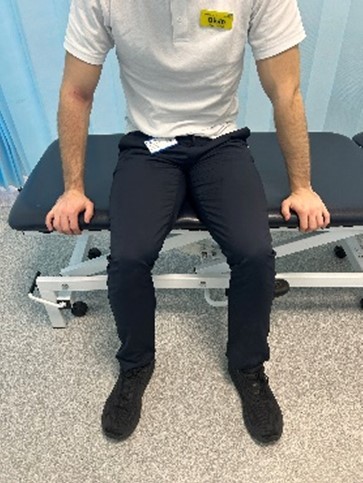
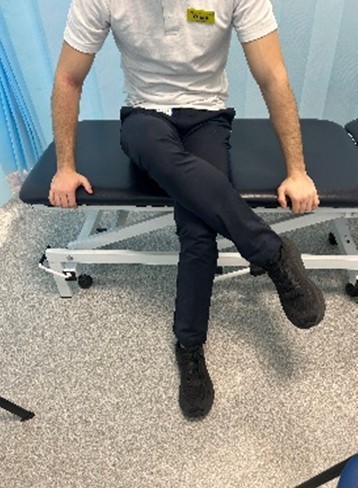
- Having your legs crossed in sitting can aggravate symptoms.
- TRY to sit forward with feet parallel
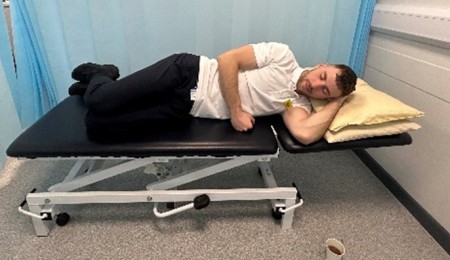
- If side lying in bed is uncomfortable.
- TRY to lie on your back if tolerable. If not, then try putting a pillow between your legs to help reduce symptoms.
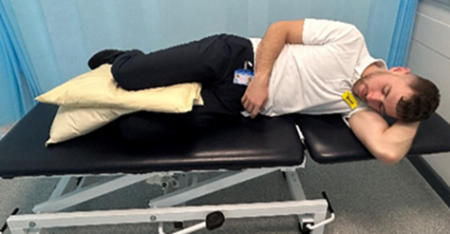
Exercises
Double leg glute bridge:
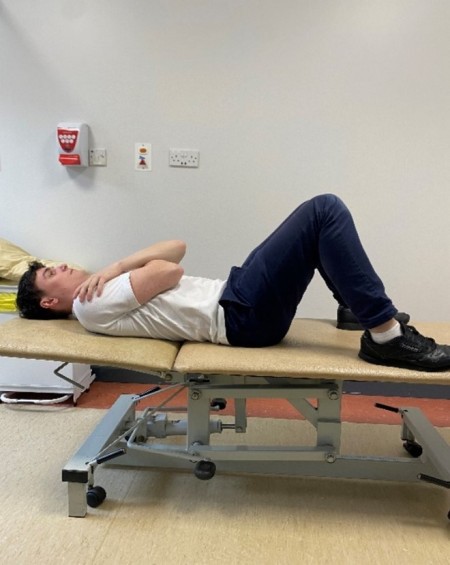
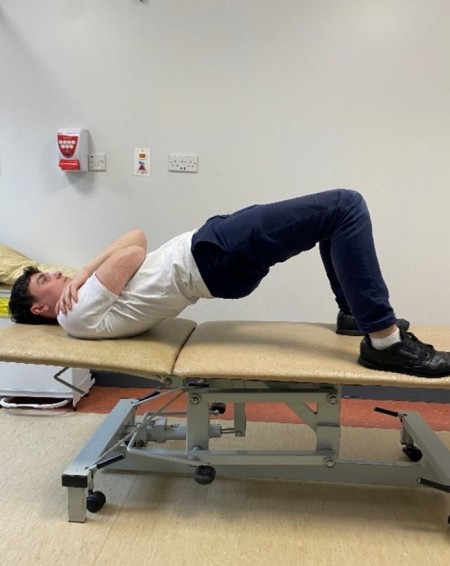
- Start Position: Lie on your back with your knees bent and feet flat on the floor, hip-width apart. Engage your core and glutes.
- Movement: Lift your hips off the ground, forming a straight line from your knees to your shoulders, then lower back down.
- Progression (Single Leg): Lift one leg off the ground while maintaining the bridge position, extending the other leg straight, and perform the bridge on one leg.
- 3 sets of 10-15 reps, resting 30-60 seconds between sets.
Side lying clams:
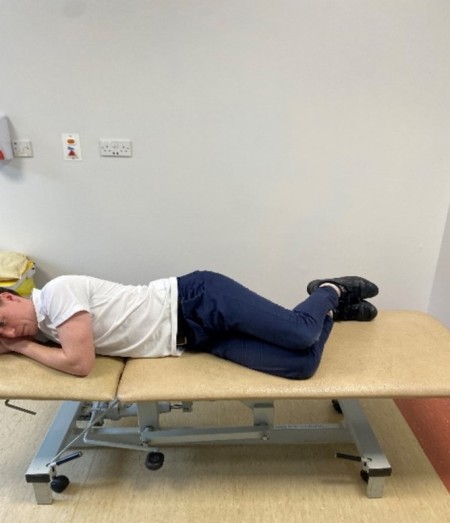
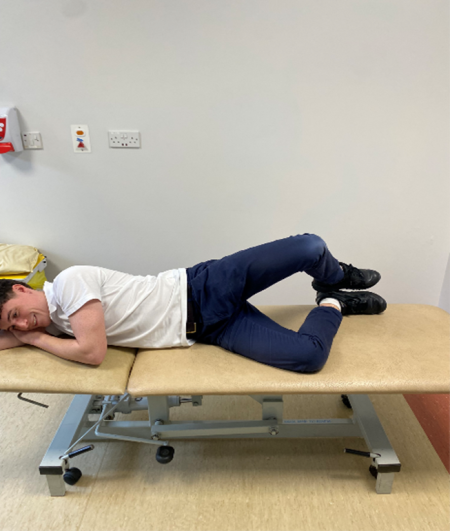
- Start Position: Lie on your side with knees bent at a 90-degree angle and feet together. Rest your head on your lower arm and keep your hips stacked.
- Movement: Keeping your feet together, lift your top knee upward while keeping the pelvis stable, then slowly lower the knee back down.
- Progression (Resistance Band): Place a resistance band just above the knees to add resistance as you lift your knee, increasing the challenge for the hip abductors.
- 3 sets of 10-15 reps, resting 30-60 seconds between sets.
Side lying hip abduction:
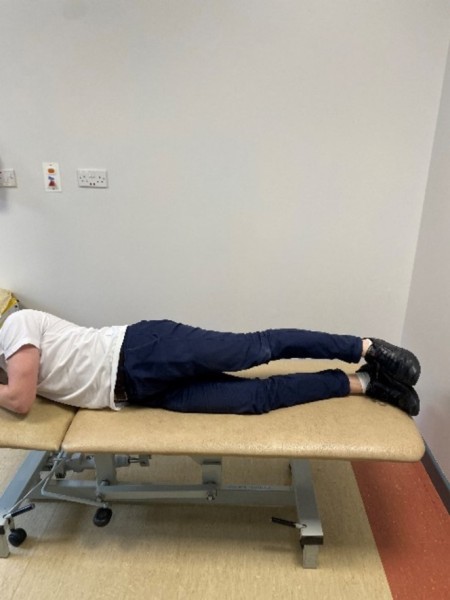
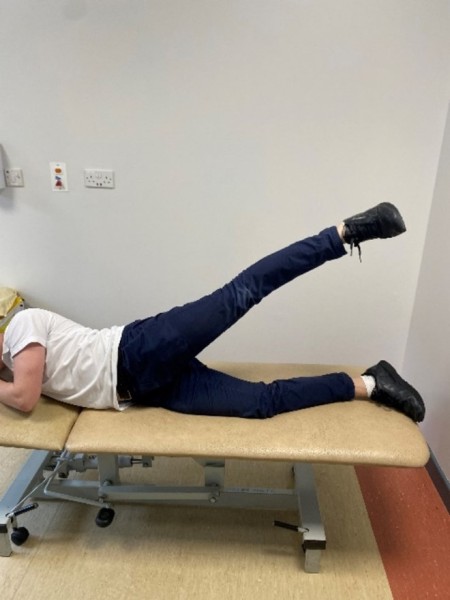
- Start Position: Lie on your side with your legs straight, one stacked on top of the other, and head resting on your lower arm.
- Movement: Lift the top leg upwards, keeping the knee straight and foot flexed, then slowly lower back down.
- Progression (Resistance Band): Place a resistance band around your thighs, just above the knees, to increase the resistance as you lift the leg, engaging the gluteus medius more effectively.
- 3 sets of 10-15 reps, resting 30-60 seconds between sets.
Sit to Stand:
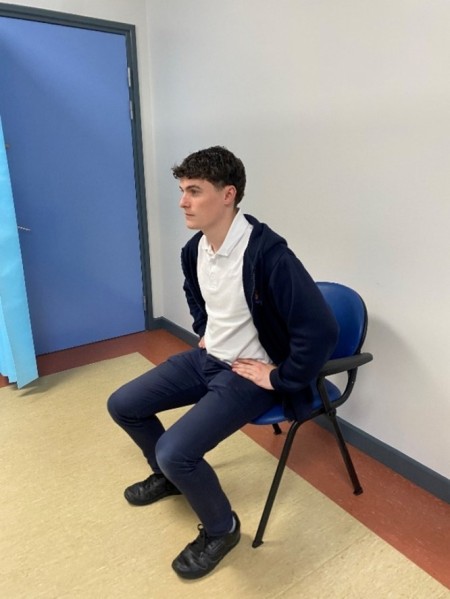
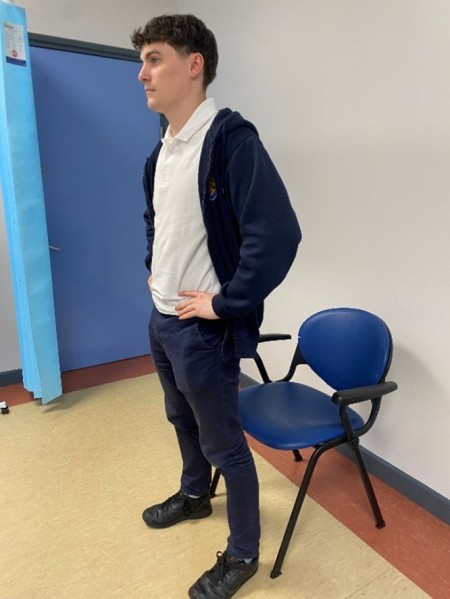
- Start Position: Sit on a sturdy chair with your feet flat on the floor, shoulder-width apart. Keep your back straight and arms relaxed or crossed over your chest.
- Movement: Push through your heels, engage your glutes, and rise to a standing position, then slowly lower back down to a seated position.
- Progression (Staggered Stance): Place one foot slightly in front of the other and perform the sit-to-stand with a staggered stance to challenge balance and coordination.
- 3 sets of 10-15 reps, resting 30-60 seconds between sets.
George Eliot Hospital is a smoke free environment. For help and advice to stop smoking you can call the national helpline on 0300 123 1044 or visit https://
Copyright
Except where otherwise noted, this item is licensed under the CC BY license (https://
If you are a rights holder and are concerned that you have found material on our patient information resources website, for which you have not given permission, or is not covered by a limitation or exception in national law, please contact us using the Feedback form providing your contact information and full details of the material.